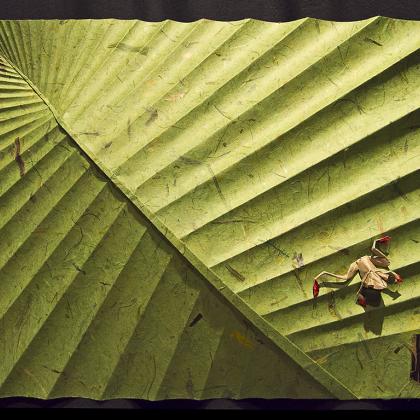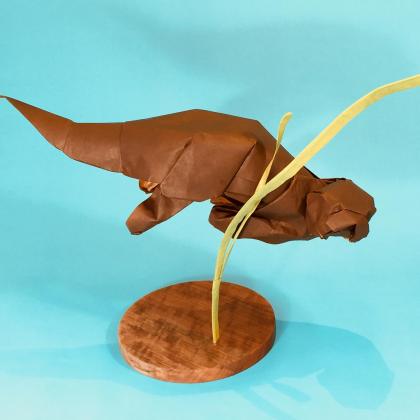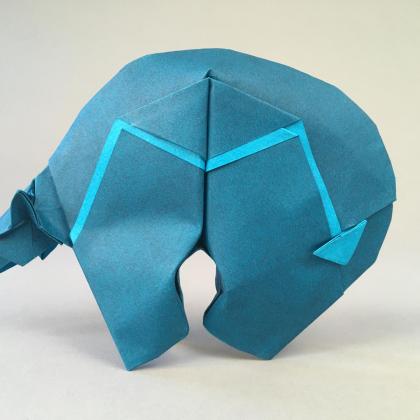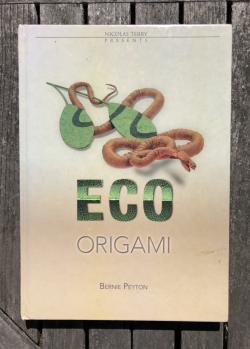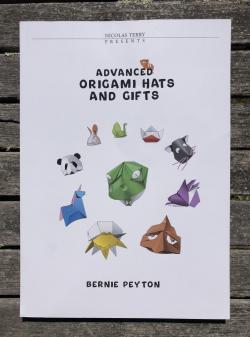Primary tabs
Creator
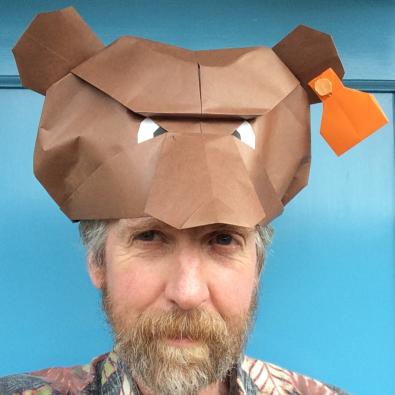
Bernie Peyton
Primary tabs
English
Spanish
Figurative
Yes, you may use or teach any of my models for educational purposes only
136 Parkside Drive
Berkeley, CA 94705
United States
About Bernie
Bernie Peyton. age 72, married, BA Harvard University 1972, MS University of Montana 1984, Ph.D. University of California Berkeley 1995.
When I was 9 years old my step-father Robert Olney gave me Isao Honda’s book on origami and said “here, this might interest you.” Thus began 50+ years of folding enjoyment. In 1998 Jeremy Shafer encouraged me to design my own origami creations. At the time I was finishing 20 years of field research on spectacled bears in the Andes. Bears were the focus of my early paper sculptures. You can see some of them on my website (www.berniepeyton.com) and learn to fold them from my book “Eco-Origami”.
My origami colleagues say they like the natural behavior I give my subjects. The natural world and fragile paper come together in my origami to tell little stories about why we need to preserve our planet. The years I spent observing animals in the field are a rich reservoir to tap for this purpose. Most practitioners of origami focus their attention on the edges of the paper. I am most enamored with what the middle of the paper can express. This is a world of curved surfaces and folds that go “somewhere about here” because it looks “right”, not because the folds line up with paper edges. The result is an asymmetrical model with breath. In the past decade my focus has changed from designing things to illustrating concepts. These works are often larger than a meter and combine folded paper with other materials (e.g., glass, steel, wood, plastic, etc.).
Aside from creating, my biggest passions are two collaborations. Since 2008 I have devoted every Thursday during the school year I am home to teaching origami to patients and their families at Oakland’s hospital for Children. This is a collaborative effort with the hospital’s art therapy specialists, school teachers, and nurses. During the same time I have collaborated with numerous artists and curators to create exhibits of origami around the world. In 2016 Uyen Nguyen and I joined the curatorial staff of the Chi Mei Museum in Taiwan to exhibit works of 60 artists and engineers from 21 countries. The 14,000+ square foot exhibit attracted 160,000 visitors. Offshoots of the exhibit included the creation of the Taiwanese Origami Group and the teaching of orgami design and mathematics from grade school to college level. Nicolas Terry published my two origami books, the last one on the hats I designed for the patients at Oakland's children's hospital.
When I was 9 years old my step-father Robert Olney gave me Isao Honda’s book on origami and said “here, this might interest you.” Thus began 50+ years of folding enjoyment. In 1998 Jeremy Shafer encouraged me to design my own origami creations. At the time I was finishing 20 years of field research on spectacled bears in the Andes. Bears were the focus of my early paper sculptures. You can see some of them on my website (www.berniepeyton.com) and learn to fold them from my book “Eco-Origami”.
My origami colleagues say they like the natural behavior I give my subjects. The natural world and fragile paper come together in my origami to tell little stories about why we need to preserve our planet. The years I spent observing animals in the field are a rich reservoir to tap for this purpose. Most practitioners of origami focus their attention on the edges of the paper. I am most enamored with what the middle of the paper can express. This is a world of curved surfaces and folds that go “somewhere about here” because it looks “right”, not because the folds line up with paper edges. The result is an asymmetrical model with breath. In the past decade my focus has changed from designing things to illustrating concepts. These works are often larger than a meter and combine folded paper with other materials (e.g., glass, steel, wood, plastic, etc.).
Aside from creating, my biggest passions are two collaborations. Since 2008 I have devoted every Thursday during the school year I am home to teaching origami to patients and their families at Oakland’s hospital for Children. This is a collaborative effort with the hospital’s art therapy specialists, school teachers, and nurses. During the same time I have collaborated with numerous artists and curators to create exhibits of origami around the world. In 2016 Uyen Nguyen and I joined the curatorial staff of the Chi Mei Museum in Taiwan to exhibit works of 60 artists and engineers from 21 countries. The 14,000+ square foot exhibit attracted 160,000 visitors. Offshoots of the exhibit included the creation of the Taiwanese Origami Group and the teaching of orgami design and mathematics from grade school to college level. Nicolas Terry published my two origami books, the last one on the hats I designed for the patients at Oakland's children's hospital.
Diagrams
